The High Museum of Art was founded in 1905 as the Atlanta Art Association. In 1926, Harriet “Hattie” Harwell Wilson High (Mrs. Joeseph Madison High) donated her home on Peachtree Street to house the association’s collection. Today the much-expanded High is a vibrant center of the arts in Atlanta. These photos are from a visit to The High in January of 2019.
The Fixture
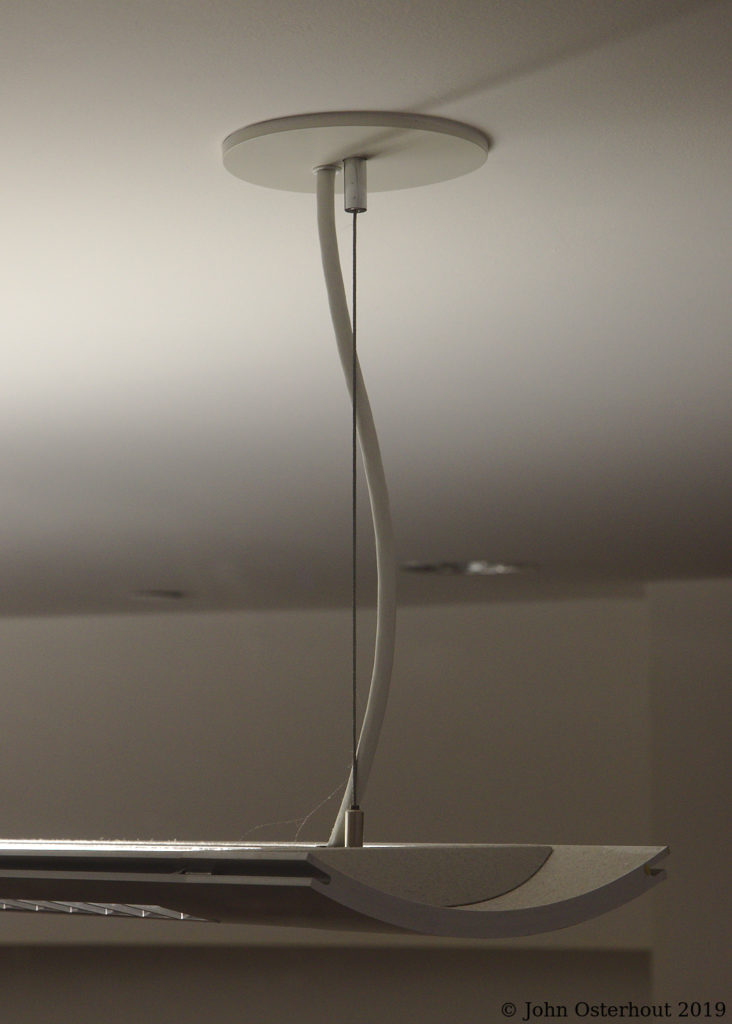
The Fixture, by an unknown artist, circa 1979. This piece is striking for its combination of curved and rectilinear forms. The hanger and the power conduit both originate in a circle. The power conduit curves gracefully behind the dark line formed by the hanger. The light is flat across the top with a curved bottom that could be an arc of a circle. The fixture and conduit are colored to match the walls and the light itself gives definition to the inside curve of the conduit and shines off of the silvery connector anchoring the hanger. The cobweb provides a note of reality to the graceful, almost otherworldly forms of The Fixture.
Descending Parallel Bars
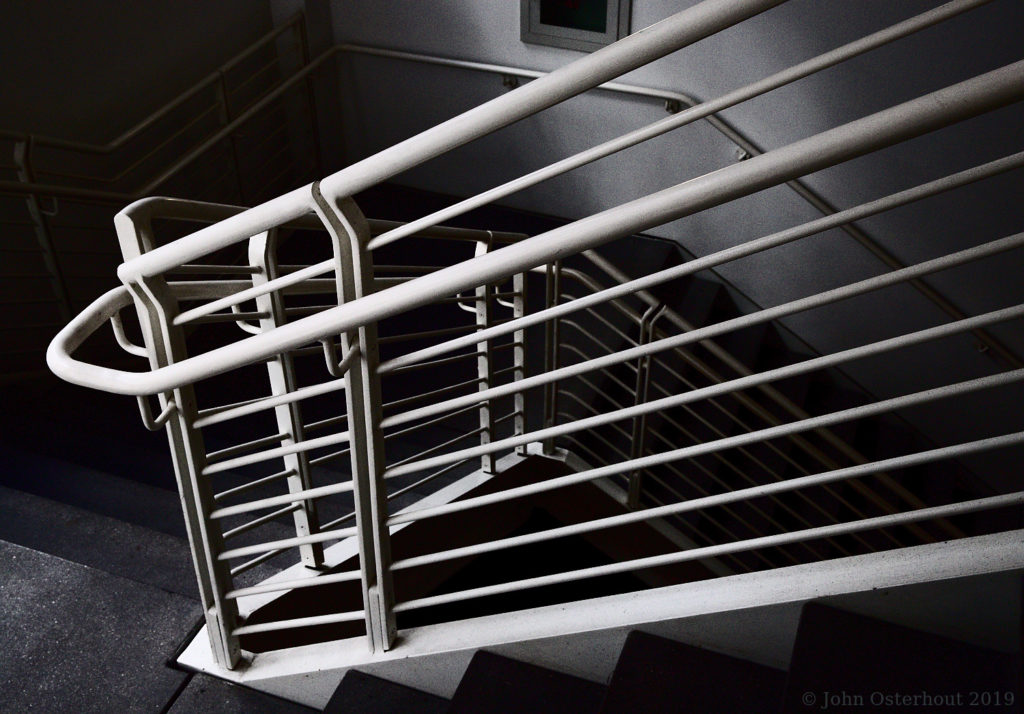
Descending Parallel Bars, by anonymous, circa 1979. For some inexplicable reason, this installation is hidden away in a stairwell. The light from a cloudy day settling through a high window accentuates the contrast between the light bars and the dark stairs. The bars thrust downward as the light from the window fades into the depths. One wonders what lurks in the darkness below.
Yellow Couch
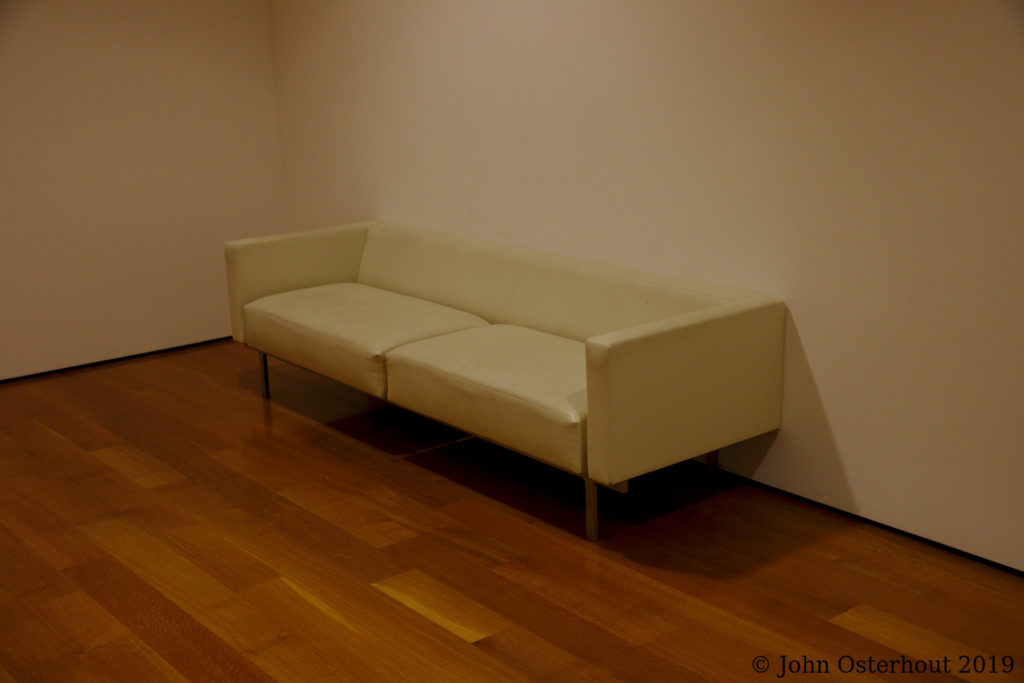
Yellow Couch, by The Retro Artist’s Collective, circa 1987. This installation is in an alcove on the bottom floor of the museum. The couch picks up its color from the subtle shades of the walls, concentrates it slightly, and holds it in contrast to the rich browns and yellows of the wooden floor. According to a brochure, the floor is made of antique Georgia pine salvaged from the barn of one Hiram P. Miller, who donated the wood to the museum in the early 1970s. The floor was lovingly sanded and hand polished by a team of volunteer docents. The docent team is responsible for maintaining the installation floor to this day.
Golden Valve
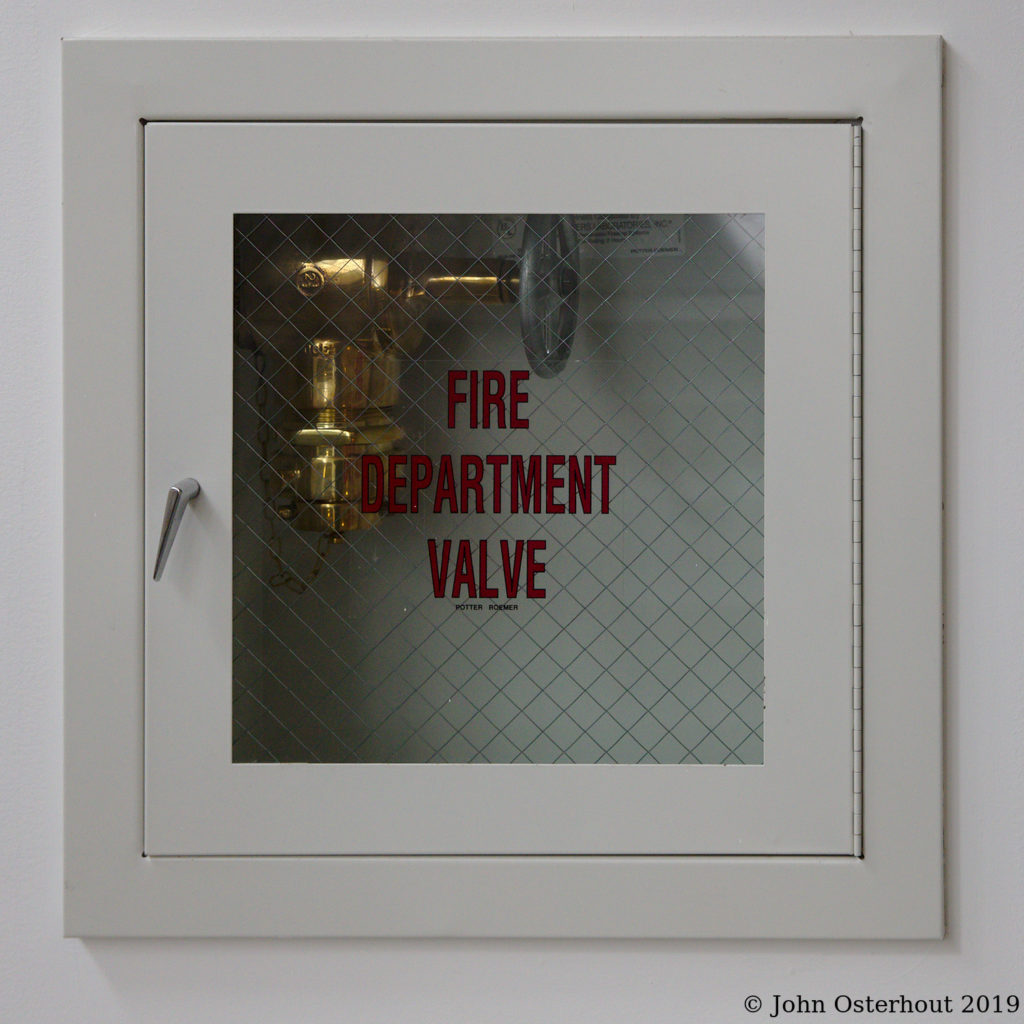
Golden Valve, by Potter Roemer, circa 1979. Set into the very wall of the museum, the golden valve with its silver handle peeks out of its square-within-a-square enclosure, protected from the outside world by a grid of wire that runs on a perfect diagonal across the viewing window. Inside, the golden valve is off center, emerging from the wall at the top left. Outside, the perfect symmetry of the nested squares is interrupted by the handle that sits askew to the left of the valve.
The installation of this artwork was not without controversy. As originally envisioned by the artist, the valve would not have been connected to anything. However, the Atlanta Fire Department inspectors noted its similarity to a real fire-fighting valve and insisted it be connected to the water supply in order to ensure that fire fighters in, you know, a real emergency, wouldn’t connect to it by mistake. A hissy fit ensued. However, the Fire Department remained adamant and the valve was eventually connected to the water system.
To add insult to injury, the Fire Department inspectors then insisted that the window have the official designation “Fire Department Valve” since it was, in fact, a functioning valve. The artist wouldn’t consent to do the lettering, so the museum hired Bert Cummings of Bert’s Best Custom Lettering to do the work. Bert was a regular around the museum and his company was responsible for all the museum’s office and miscellaneous lettering since the mid 1970s. Cue the second hissy fit.
The matter was resolved when Bert and Potter retired to Manuel’s Tavern to discuss the matter. There, over beers, they talked of fonts, serifs, descenders, x-heights and subtleties of shading until, in the wee hours of the morning, they discovered they were best friends… and very drunk. The lettering was done the day after Bert sobered up. Bert is not credited on the artwork, as you see, but his name appears prominently in the museum’s brochure and in the audio tour.
Turret and Panels
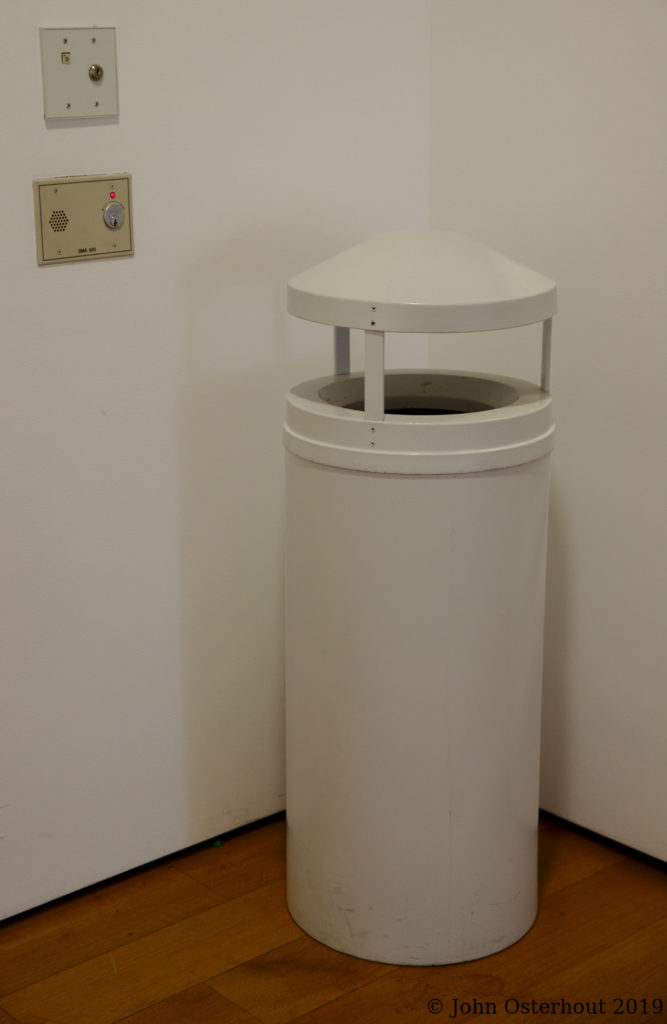
Turret and Panels, by James A. Jackson, circa 2007. The English artist, James A. Jackson, intended this work to be part of a larger work to be titled “Turrets and Wall”. However, when he saw the museum space, he abbreviated the work to the elements you see here, the Turret and two panels that look as if they might control something. When asked about the panels some years after the installation, the artist said, “They don’t work, do they? The light flashes red and green for no reason at all and I lost the keys to the little lock-thingys, which don’t do anything anyway.” Jackson continued that the panels were added to give a high-tech component to the turret, which, bereft of an actual gun emplacement looks remarkably like a trash receptacle.
Bonus Frame – Emergency Exit
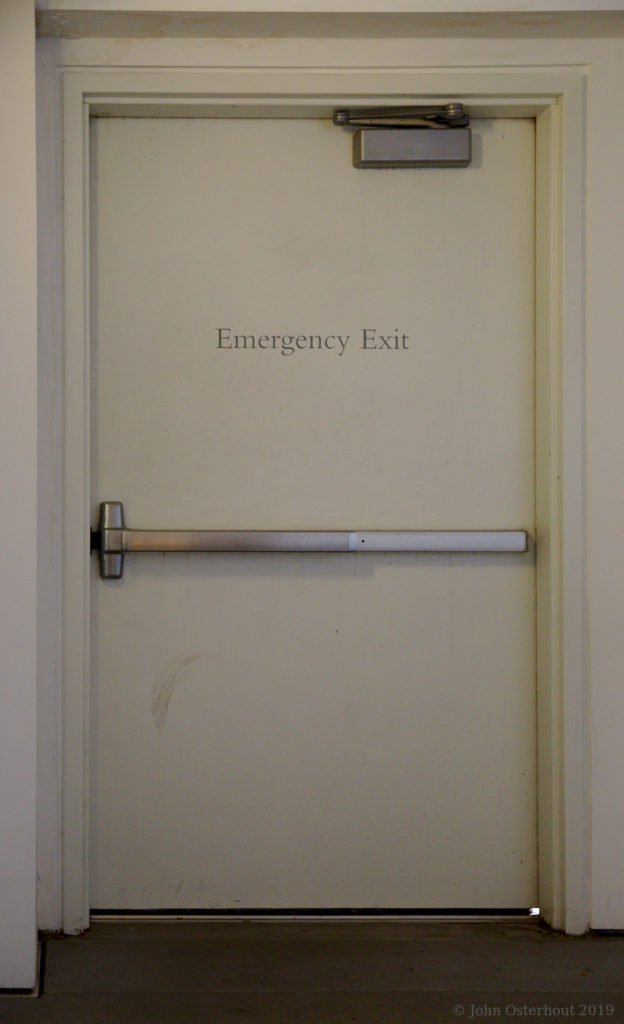
Emergency Exit, by an unknown artist, circa 1979. I found this door on the lowest level of the museum and was enamored of the contrast between the pale colors of the wall and door with the metal accouterments and matching gray lettering. The gradient of brass coloring on the handle is a detail that might have been ignored by a lesser artist. Curious to know if the door was designed to actually open, I pushed it, and found myself in the courtyard outside. My transition was accompanied with a loud warbling noise that I found to be annoying and most distasteful. A pair of uniformed guards arrived shortly to deal with the noise and soon after so did some neatly-dressed officials from the museum. The museum people had kindly called me a cab and graciously escorted me down to the front of the museum where it was waiting. They cheerfully waved me off and I watched them recede into the distance as the cab made its slow and winding progress back to my hotel.
All kidding aside, if you are in Atlanta, go see The High. In a later post, I’ll put up some more frames of The High, these a little more consistent with the character of the museum than the hidden scenes I’ve presented here.
My purpose in visiting Atlanta was tourism and photography so I didn’t follow my usual nifty-fifty approach and I was lugging my 6DII and the Canon 24-70mm f2.8.
Love the comments, you should write a book. Oh wait, you did!